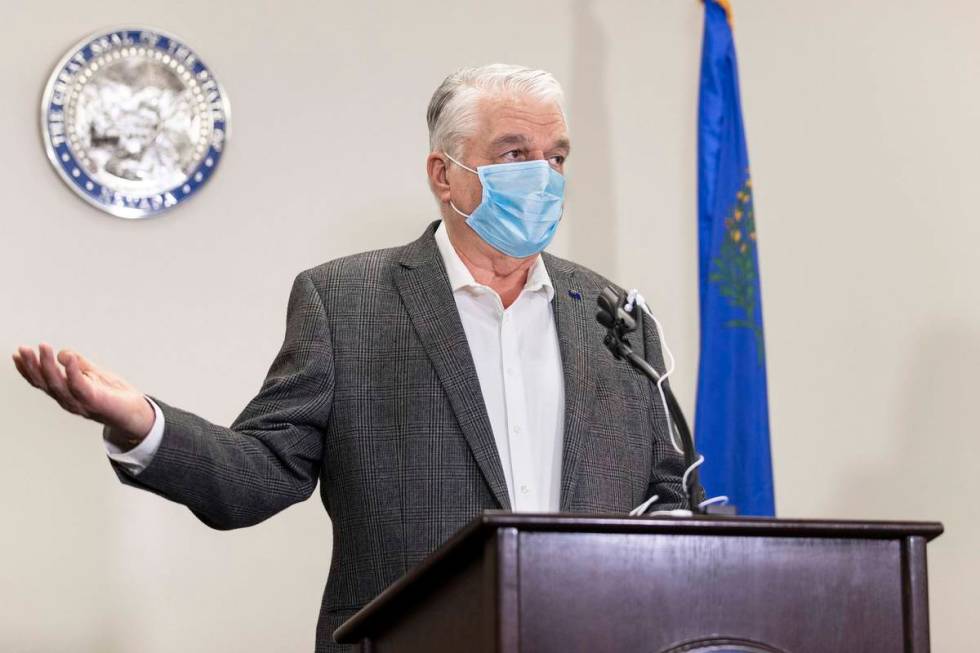EDITORIAL: The deadly consequences of Sisolak’s coronavirus restrictions

More Clark County children died from drugs last year than from the coronavirus. Same with suicide. Both numbers were up significantly from 2019.
These children didn’t die directly from the virus, but it’s fair to assume that pandemic restrictions contributed to the increase in deaths.
Last March, Gov. Steve Sisolak shut down Nevada. He was far from alone. The Trump administration declared the country needed “15 days to slow the spread.” In the face of a highly transmittable and largely unknown virus, it was a reasonable step. But the spread continued, and lockdowns were never meant as a permanent condition.
There’s an obvious reason for that. Human beings need social activity. They need to interact, talk and laugh with other people. There’s a reason solitary confinement is such an extreme punishment for people who are already in prison. The ACLU contends the isolation “exacerbates mental illness — or even causes it in prisoners who were healthy when they entered solitary.”
But various versions of the lockdowns have continued. Ten months later, Gov. Sisolak asked Nevadans to limit family in-home gatherings. The state government put greater restrictions on houses of worship than on casinos, at least until the U.S. Supreme Court stepped in. Almost every public school building in Clark County remains closed to students.
It will likely take a decade or more to understand the full extent of the damage these restrictions did to children. The early data is reason enough for concern. Last year, 13 children in Clark County died from drug intoxication. In 2019, only two children died from drug exposure. Last year, 15 children died from suicide, compared with 10 in 2019. The youngest victim was an 8-year-old boy. That is an unfathomable tragedy.
For comparison, state data suggests less than a half-dozen children under 20 have died from the coronavirus. The state dashboard currently lists age group deaths by percentages, so the precise number isn’t clear.
There is a need for caution here. Situations involving drug overdose and suicide usually involve a host of factors. One data point doesn’t prove causation.
But there is other evidence, aside from common sense, that lockdowns hurt the mental health of America’s youth. Last June, the CDC conducted a mental health survey. It found that nearly a quarter of those ages 18 to 24 had “seriously considered” suicide over the past 30 days.
As Nevadans will be finding out for years to come, broad efforts to stop one public health crisis may have caused an entirely different set of tragic consequences.